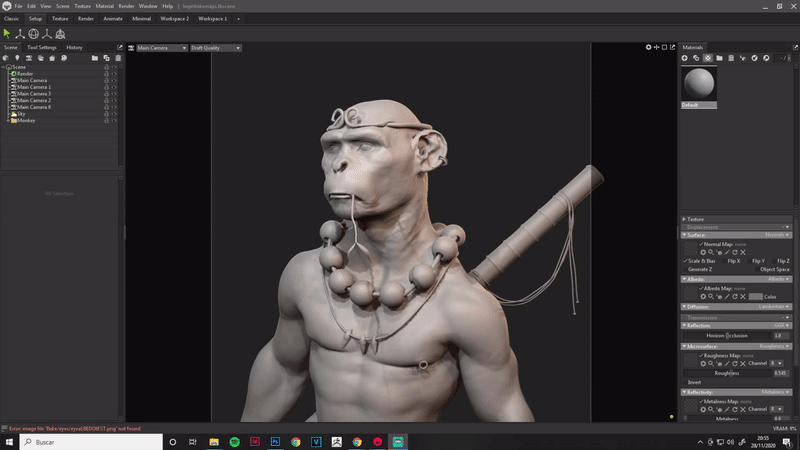

You can achieve this look with a low roughness value, and low metallic value, some placed lights, and a more detailed ambient cubemap. There is a white reflection (maybe little yellow) from what looks like a flourecent light, and a blue reflection on the side which looks like sky. I would try unhooking the specular color texture you are using, and modify/tweak the surface properties of the metal by adjusting roughness and metallic inputs as others have mentioned. You need to build that shader using either the make or break material attribute nodes or buy making a bunch of different material functions that you can blend together using the material Layer Blend nodes. I’m going to go through the example projects and see if they have a shader that does what I want first though.Īre you talking about RGB Mask packing? If so you can do it inside of UE4 but it’s not as simple as Marmoset makes it. I was hoping it would be a bit simpler than that. I guess I will have to read up on the material editor and try to find a way to get the same results I can get in marmoset. It almost seems to me like UE4 forces you to do something similar to a metalness workflow but not all artists want to work that way I still like my specular maps. For example I have plastic, rubber, paper, painted metal, and a chrome like metal that I want to be able to store all on one shader(glass was a different shader) that illustrates the principles from marmosets pbr workflow.

I have 5 different materials In this mesh that marmoset was able to show through texture and not actual different shaders. Why should I leave specular at 0? The whole point of the specular map is to control the reflectivity and reflected color of different parts of my object. Study the Roughness section and play with the slider, it will help you achieve the results you want in conjunction with the metallic input most of your mesh will need a roughness value in the higher range to look correct. This link is very informative and will help you understand what everything does. For the roughness, you can use a linear interpolate to vary the roughness between two values for different parts of the object based on the texture. Roughness is just what it sounds like, setting it to 0 will result in a perfectly smooth surface, a higher value will be rougher and light will be scattered. Next you should disconnect specular and leave it alone, you should leave specular at default for metals or anything that behaves like one. 0 means it isn’t metal, the closer to 1 the more metallic you can adjust it with your texture and a Lerp node. You’ll need a simple node network connected to Metallic, since I assume that your fire extinguisher is mostly metal.

The “Metallic” input tells the engine how metal-like it is. UE4’s PBR uses information that you supply about certain properties to accurately determine what it should look like.


 0 kommentar(er)
0 kommentar(er)
